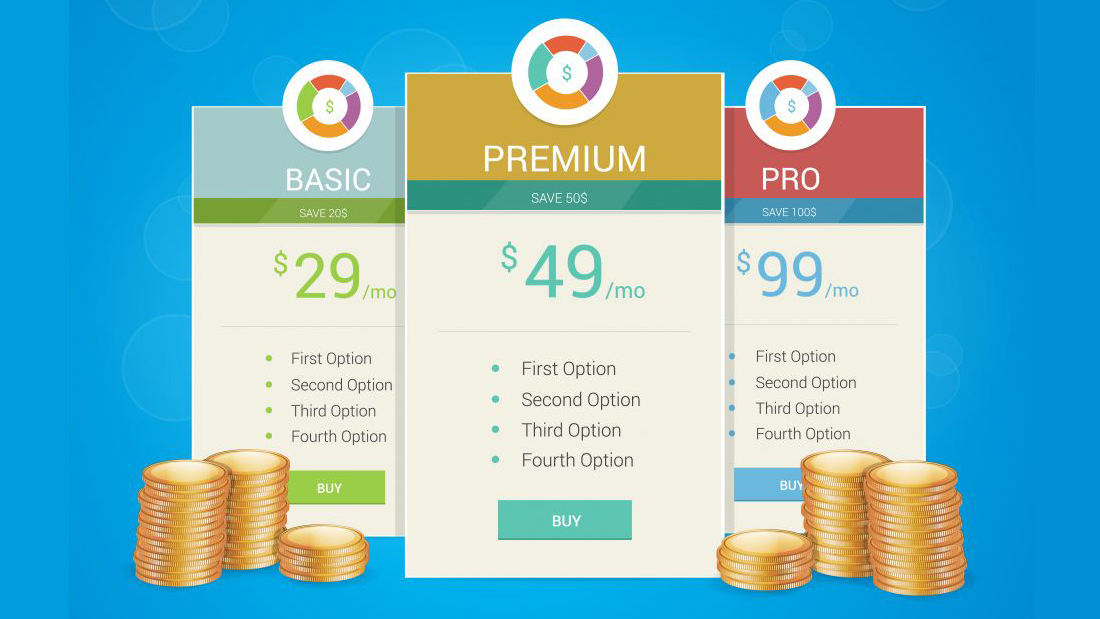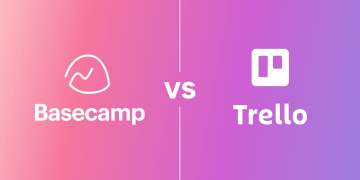Basecamp has long been recognized as one of the most popular project management tools in the digital landscape. With its simple, streamlined approach to collaboration, task management, and team communication, Basecamp has made a name for itself in both the startup world and enterprise-level organizations. A key feature that has set Basecamp apart from its competitors is its flat pricing model. This unique structure has generated considerable debate in terms of its suitability for small teams versus large enterprises.
In this article, we’ll take a deep dive into how Basecamp’s flat pricing model works and evaluate its benefits and potential drawbacks for both small teams and big enterprises. Whether you’re managing a small team of creatives or overseeing a sprawling global workforce, understanding the implications of Basecamp’s pricing structure can be crucial for making an informed decision.
Understanding Basecamp’s Flat Pricing Model
Before exploring how Basecamp’s flat pricing model benefits different team sizes, it’s important to first understand what this pricing model entails.
Basecamp uses a simple flat rate for its service: $99 per month for unlimited users, projects, and clients. This straightforward pricing model contrasts with many of the industry’s traditional approaches, which charge based on the number of users, the amount of storage, or specific features required.
The flat pricing is all-inclusive, meaning you won’t pay more as your team grows or as your projects multiply. No need to worry about tiered plans, hidden fees, or scaling costs. You know exactly how much you’ll pay every month, regardless of how many people are actively using the platform.
This makes Basecamp’s pricing model one of its most talked-about features, particularly because it offers a predictable, transparent cost structure.
Key Features of Basecamp
To further understand how the flat pricing model works, let’s take a quick look at the core features Basecamp offers. These include:
- Project Management: Basecamp provides users with a central hub where teams can manage their projects, assign tasks, set deadlines, and track progress. The platform allows you to organize multiple projects with ease, all under one roof.
- Team Communication: Basecamp includes built-in messaging boards, chat features, and direct messaging, allowing seamless communication among team members.
- To-Do Lists: Organize your tasks with Basecamp’s to-do lists. You can assign specific tasks to individual team members, set due dates, and track progress.
- File Sharing & Collaboration: Basecamp allows you to share files, documents, and images, as well as collaborate on these resources in real-time.
- Automatic Check-ins: Instead of endless meetings, Basecamp helps teams stay in the loop with automated check-ins, where team members can update their progress at regular intervals.
- Client Access: Basecamp enables users to invite clients to specific projects, giving them access to certain tasks, documents, or schedules without overcomplicating the process.
The simplicity of the interface and the integration of these features allows small and large teams alike to stay organized without being bogged down by complexity.

Basecamp’s Flat Pricing: Small Teams
For small teams, Basecamp’s flat pricing structure offers several distinct advantages. Small teams often operate under tight budgets, limited resources, and an environment where efficiency is paramount. Here’s how Basecamp’s flat pricing can provide value:
1. Predictability and Cost Control
One of the primary benefits for small teams is the predictability of costs. Small businesses, startups, and creative teams often face fluctuating budgets. For these organizations, Basecamp’s flat pricing of $99 per month allows for accurate budgeting without unexpected costs. There’s no need to worry about paying more if the team grows or if multiple projects are running simultaneously.
Moreover, with the cost fixed, small teams don’t need to pay for “premium” plans or additional features that they may not need. This means that small teams can enjoy an enterprise-grade project management system at a fraction of the cost of other platforms that charge by users or usage.
2. Scaling Without Extra Costs
As a startup or small business grows, it often requires a tool that can scale with it. Many project management platforms increase in price as the team expands. For example, platforms like Asana, Trello, or Monday.com charge per user. As a result, if your small team grows from 10 to 20 people, your monthly cost can double or triple, which can be an issue for companies with limited resources.
With Basecamp, the flat rate means you won’t pay more even as your team or project count increases. As small teams grow, this is a major advantage because they can continue using the same tools without worrying about scaling costs. Whether you’re adding a few new hires or launching multiple new projects, Basecamp’s pricing doesn’t change.
3. All-in-One Solution
Small teams often don’t have the luxury of hiring a full-fledged operations team to manage software tools. Basecamp’s all-in-one approach — combining communication, task management, file sharing, and more — provides simplicity and ease of use. The flat pricing model encourages small teams to use everything that Basecamp has to offer, without worrying about add-ons or additional payments for features like project management or reporting.
The absence of complex tiered pricing or feature-based restrictions means small teams can use the platform to its fullest without any barriers.
4. Increased Focus on Collaboration
Collaboration is at the heart of Basecamp, and for small teams, this is crucial. The platform encourages open communication between team members, all under a unified system. For small teams with limited resources, being able to centralize communication, tasks, and documents in one place means less time spent switching between tools and more time on productive work.
Basecamp’s Flat Pricing: Large Enterprises
While Basecamp’s pricing is undoubtedly appealing to small teams, it also holds certain advantages for large enterprises — though there are some important considerations. Large enterprises often have complex organizational structures, multiple departments, and diverse teams. Here’s how Basecamp’s flat pricing model plays out for big enterprises:
1. Simplicity Across Large Teams
For large organizations, Basecamp’s simplicity can be a major benefit. Large teams often use multiple project management tools for different functions (e.g., one tool for communication, another for task management). Basecamp eliminates the need for multiple subscriptions and tools by offering an all-in-one solution. No need to juggle different platforms for different purposes — Basecamp covers everything with its flat pricing, making it easier to manage costs and workflows.
In enterprises where a team might need to collaborate across several regions or departments, having one tool for everything simplifies the experience for both employees and clients.
2. Avoiding Overcharges
For larger enterprises, the ability to avoid the spiraling costs associated with per-user plans is highly attractive. Many other project management platforms charge per user or per feature. In contrast, Basecamp’s flat pricing ensures that companies don’t have to worry about the escalating costs as more users are added. This can be especially beneficial when scaling enterprise-level projects where you might have hundreds of users or clients interacting with the platform.
Moreover, it reduces the administrative burden of managing multiple licenses, plans, and invoices across various departments.

3. Transparency and Ease of Budgeting
For big enterprises managing complex budgets, Basecamp’s predictable pricing provides a level of financial transparency that is highly valuable. Larger organizations with many teams and departments may find themselves dealing with multiple software subscriptions and costs. Basecamp’s flat pricing streamlines budgeting, making it easier to predict costs year after year without surprises.
While other platforms might have various premium features or “enterprise-level” plans that incur additional costs, Basecamp provides a single pricing point for all users, which simplifies financial forecasting and reporting.
4. Suitable for Remote Teams and Global Enterprises
As remote work and global collaboration become more common, enterprises increasingly rely on cloud-based tools to manage communication across time zones. Basecamp’s simplicity makes it ideal for large remote teams that need to coordinate across different locations. The flat rate ensures that enterprises can provide the same tools to employees regardless of their location, without worrying about geographic limitations or additional fees.
Potential Drawbacks for Both Small Teams and Large Enterprises
While Basecamp’s flat pricing model offers many advantages, there are also potential drawbacks to consider:
1. Lack of Customization
Basecamp’s flat pricing means that every user gets access to the same core features, but it lacks some of the more advanced customization options that larger enterprises might require. For example, larger companies might need more detailed reporting or specialized integrations with other enterprise tools. While Basecamp offers some flexibility, it may not be as feature-rich as other enterprise-grade tools like Jira or Wrike.
2. Limited Features for Large Enterprises
While Basecamp is designed to be a simple, user-friendly tool, large enterprises with complex workflows or specialized needs may find the lack of advanced project tracking, resource management, or real-time analytics limiting. If your company requires advanced Gantt charts, task dependencies, or complex reporting features, you might need to integrate other tools alongside Basecamp.
3. No Tiered Plans
While the flat pricing model is great for many, some large organizations may feel that they’re paying for features they don’t use. While this may not be a significant issue for small teams who need access to all features, larger enterprises may prefer the option to only pay for what they use.
Conclusion: Who Benefits Most from Basecamp’s Flat Pricing Model?
Basecamp’s flat pricing model offers undeniable value for both small teams and large enterprises. Small teams benefit from predictable costs, the ability to scale without extra charges, and a simplified, all-in-one platform. Large enterprises enjoy the transparency of flat pricing, the ability to manage large teams without worrying about per-user fees, and the simplicity of having a unified platform.
However, for both small and large organizations, there are trade-offs. Small teams with complex needs or enterprises with highly specialized workflows may need more advanced features than what Basecamp offers. Nevertheless, for many teams, Basecamp’s simplicity and all-inclusive pricing provide an excellent solution for managing projects, no matter the size.






















